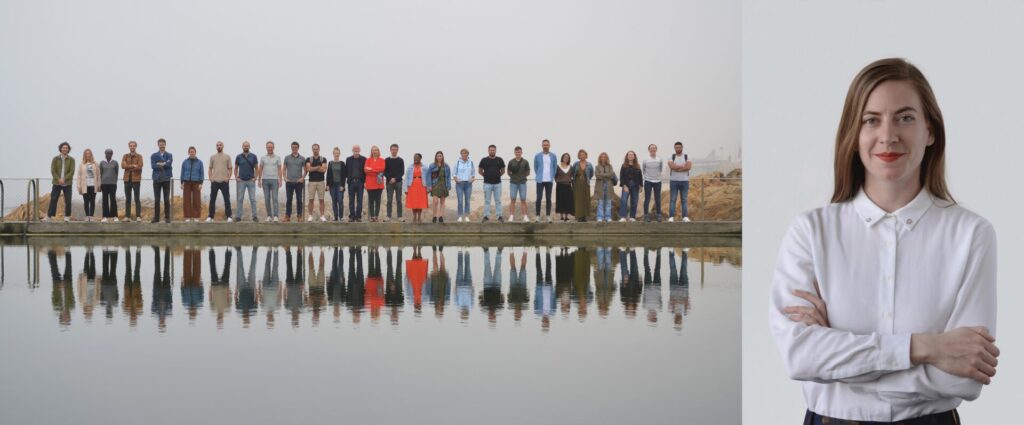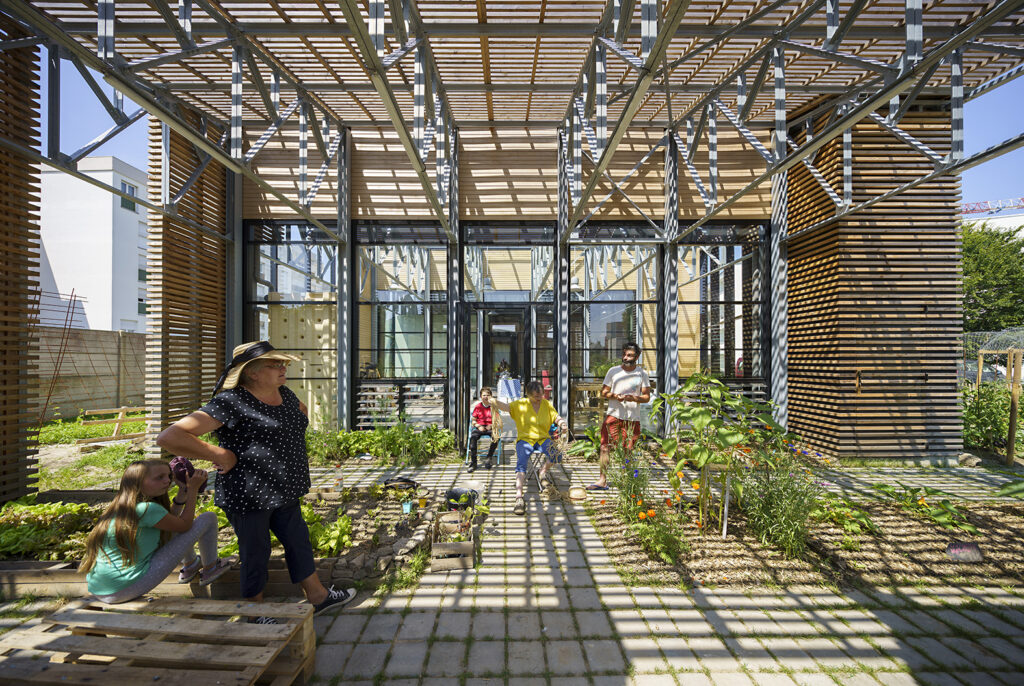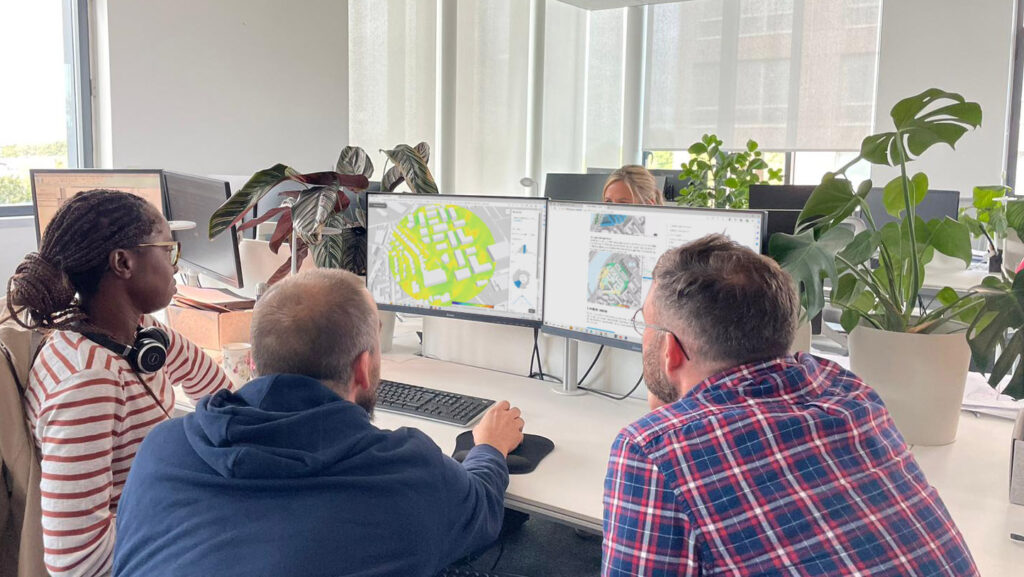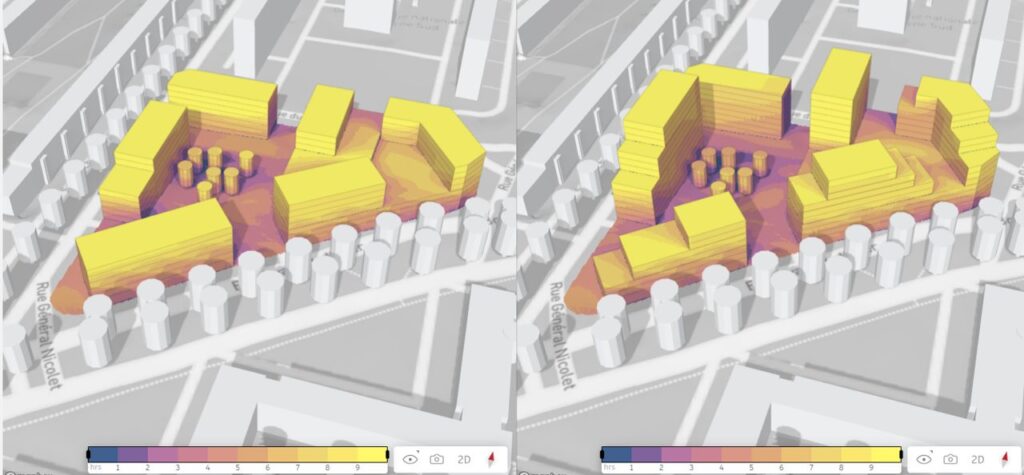
The Forma team meets Lucile Poirot from Club to chat about pioneering the use of new digital tools, how automation frees up more time for creative exploration, and how Forma empowered them to take on larger projects and help grow the business.
Lucile, what’s your role at Club?
I’m an architect and general engineer at Club, an architectural company based in Paris and Rennes, France. I joined the company in 2018, and transitioned to become the Methods and Quality Manager where I played a key role in supporting the company’s growth. Currently, I’m a Partner and Quality Director, leading ongoing improvement efforts within the company, overseeing our development and internal structure, and ensuring the optimal performance of our tools and resources.
Can you tell us more about Club and your approach?
We work mostly on offices, residential and industrial sites, and public buildings. We’re a studio of 32 great people who are skilled experts with diverse yet complementary profiles. As a team, we set high standards for all our work. We aim to design the best possible projects and buildings that offer great qualities of use and foster a sustainable urban ecosystem. We imagine living spaces that blend seamlessly into their surroundings.

Can you tell us about your digital strategy and how this supports your ambitions as a practice?
Innovation is one of the pillars of our company. We foster a culture that cultivates the growth of every employee’s skills. We continuously train ourselves and develop new solutions to improve our practice to serve the projects and their final users. Providing the right level of client guidance is the key to achieving the best projects. For this purpose, we offer a broad range of tools to guide our clients through every phase and ensure smart decision-making. The digital model is vital in our design process, and a must-have for every presentation to the client, consultants, and other stakeholders. Our company is highly structured, with well-defined roles and streamlined communication channels that ensure efficiency and effectiveness in adopting new ideas, processes and tools such as Forma.
What do you look for when you’re testing new digital tools?
We follow developments in the architecture industry closely, including advancements in AI technology. We’re always looking for innovative tools that can automate our daily tasks to free up more time for creative exploration and improve collaboration with our clients. Additionally, data collection and rapid visualization are important.
“We’re always looking for innovative tools that can automate our daily tasks to free up more time for creative exploration and improve collaboration with our clients.”
Lucile Poirot, Architect and Partner at Club
When testing a new tool, we look at how it will integrate into our existing workflow: Is it accessible on our current computers? How many people can access it initially? How do we input data? What kind of data do we get and in what format, etc.
What challenges do you face today in using innovative new tools?
One issue is maintaining continuity of our work considering how fast these new tools evolve. Having seen many innovative tools shift drastically during their early development, we need to weigh up the time, money and training we can invest in testing new software that’s continuously changing, and which requires us to adapt our workflows. While testing Forma, our feedback has now been incorporated into the software: it’s always nice to be heard and it encourages us to continue testing with the Forma team! Compatibility is essential; with Forma being part of the Autodesk ecosystem, this assured us that future development would be directed towards greater integration with other Autodesk software, such as Revit, that we use daily.

What types of projects do you use Forma for?
Mostly for urban studies such as larger urban renewal projects with mixed functions, residential, commercial, parking and more. It’s also beneficial on projects involving different stakeholders in the decision-making processes, like the municipality, developer, and us. Today we start all our new projects in Forma, getting the 3D model of the context and then importing it into Revit to create a solid base to study the urban context.
How do you use Forma within your existing toolsets and workflows?
It is used in the early stages of research and design. We’ll set up the project in Forma, print out maps of the site, and explore our options with the architectural director. We work on paper and in Forma at the same time to evaluate our options and check the data of the pencil intentions. We repeat this process several times throughout the project and may even meet with our client and explore different options in Forma. The first proposal could be ready in 1-2 hours. Then, we’ll import the model into Revit for the next design stage.
“We work on paper and in Forma at the same time to evaluate our options and check the data of the pencil intentions.”
Lucile Poirot
The strength of Forma being web-based is that it works without huge files and big, clunky software that takes minutes to open. We often integrate screenshots into slideshows that can also be edited and stored online too. For early-stage design, when we want to be interactive and responsive to our clients, it’s helpful to be able to easily access, edit and share the data.
What are some of the benefits you’ve experienced from using Forma?
It does mostly everything I’ve been looking for to improve the architect’s design process and help reduce our time doing tasks that are not about problem solving or creative thinking.
Previously the modelling of the urban context with the IGN (The National Institute of Geographic and Forest Information) topography took us around half a day, and it was already well automated. Now with Forma it takes a maximum of 15 minutes to set up the project, send the data to Revit, get the data in Revit and save the project to give the file to the project manager.
“Previously the modelling of the urban context took us around half a day. Now with Forma it takes a maximum of 15 minutes to set up the project.”
Lucile Poirot

Having live data output for area metrics, sun, wind, noise, and other factors helps us confirm and visually explain a technical or architectural choice we’ve made e.g. to improve comfort for the final users. These visuals are easily and quickly obtained in the same point of view and graphic style as the other visuals. The rapid modelling tools allow us to edit the project in real time, even during a meeting–we only do this with trusted, regular clients, but it’s still a huge time gain to be able to test, discuss, and validate everything when everyone is around the table. Being cloud-based, the software is always up-to-date with no installation required.
Can you share some examples of how using Forma helped you improve a design?
Using insights from the wind analysis, we changed the angle of a façade to eliminate wind currents at an entrance plaza on one project, and re-designed an outdoor shopping street because the proposed pedestrian street would be too windy. Also, we were able to validate the comfort and tranquility of a park using Forma’s analyses. In another project, we explored options of varying height combinations to see how they met various criteria including regulations, urban dynamics, and maximum rentability.

What about improving business outcomes?
Having Forma allowed us to handle larger sites and confirm to our partners that we could collaborate with them on these new projects without increasing the resources or time needed. As we kept getting bigger projects, the ability to quickly explore options in Forma with a lot of data was a game changer. Where we previously did feasibility studies in Revit for a 35-unit housing project, we can now do a similar study for a 20,000 m2 site in Forma. While the level of detail is not the same, the stage of business development is relatively similar on both types of projects. Now that we’re getting these larger projects more regularly, and we know that we can handle them efficiently, this has helped us grow the business.
What’s next in terms of your digital strategy and tools, and the way you want to work?
Currently, we’re satisfied with our architectural design toolset. Our aim now is to consolidate our expertise and improve our processes, in particular by increasing the number of trained users of Forma in our team. At the same time, we’re focusing our search for new tools to improve the way we run our business and manage projects.